Category: Use Case
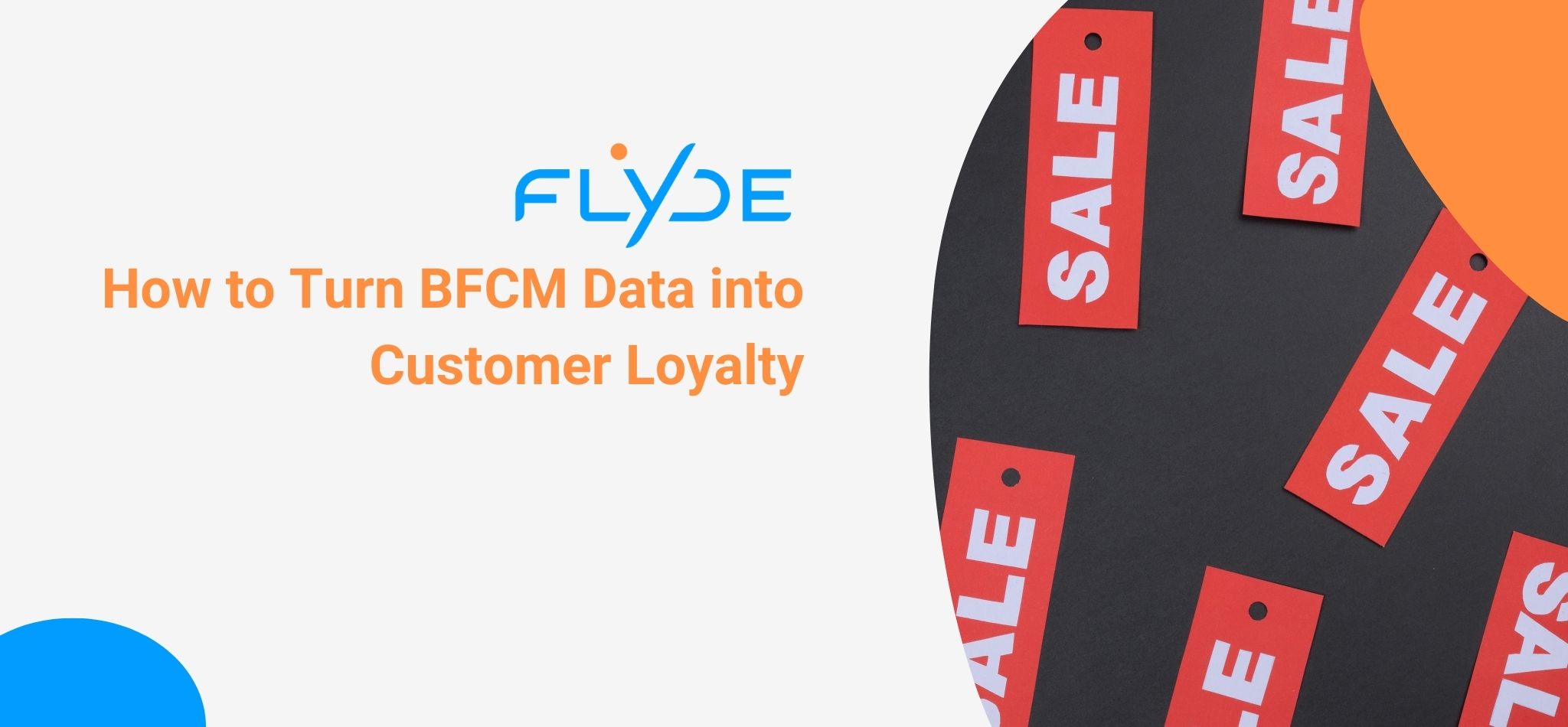
For many businesses, Black Friday–Cyber Monday (BFCM) is the most intense moment of the year for the business’s data. Traffic surges, transactions peak, and first-time buyers arrive in waves. For many brands, this weekend generates a huge portion of their annual revenue.
But the real objective shouldn’t be just to make the sale. The goal should be to convert those new buyers into long-term customers. Without a way to unify and activate data, brands often miss the opportunity to build loyalty after the sale, leaving a massive amount of valuable customer information and opportunity for growth on the table.
THE DATA CHAOS OF BFCM
During BFCM, data flows in from every direction: websites, mobile apps, paid ads, emails, and ecommerce platforms. The omnichannel nature of data sources presents a significant challenge. Customers appear under different IDs, creating fragmented and duplicated records that are almost impossible to activate for retargeting or loyalty campaigns later on. Instead of starting the new year with a stronger customer base, many brands are stuck cleaning up a data mess.
This is where a Customer Data Platform (CDP) becomes an essential tool. A CDP like FLYDE is built to handle this exact challenge by bringing all your customer data into one unified, intelligent platform.
HOW CAN FLYDE HELP?
Real-Time Identity Resolution
One of the most pressing technical challenges of BFCM data management is identity resolution. With traffic and transactions peaking, businesses need a way to link anonymous browsing sessions to known customer profiles.
A CDP like FLYDE combines first-party data such as emails, phone numbers, and loyalty IDs with anonymous digital signals. By resolving identities in real time, the platform eliminates duplicate records and builds a single, accurate profile of each customer. This ensures that even when activity spikes, businesses maintain a complete and coherent view of their customers’ journeys.
Smarter Segmentation
Not all BFCM buyers are equal. Some are loyal customers taking advantage of promotions. Others are deal hunters who may never return without the right follow-up. Treating both groups the same reduces efficiency and limits retention.
McKinsey research shows that companies excelling at customer personalization generate 40% more revenue from those activities than their peers. Advanced segmentation supported by a CDP enables businesses to separate high-value customers from bargain-driven shoppers. For example, FLYDE allows marketers to distinguish between customers who only purchase discounted items and those who also explore full-price collections. This insight shapes tailored post-purchase communication that increases the chance of long-term retention.
Omnichannel Activation
Clean, segmented data is only valuable when it can be activated across the right channels. Modern CDPs sync enriched profiles with platforms such as Meta Ads, Google Ads, email marketing tools, and SMS systems. This allows marketing teams to stop wasting spend on customers who already converted, deliver personalized journeys in the channels where customers are most active, and build targeted retargeting campaigns that deliver higher returns.
By closing the loop between data collection, unification, and activation, businesses ensure that the customer relationships formed during BFCM extend beyond a one-time transaction.
A PRACTICAL EXAMPLE
A consumer electronics retailer uses FLYDE ahead of BFCM to connect its Shopify store, email marketing platform, and Meta Ads. They create unified profiles for 120,000 customers and segment them by purchase margin, that is, those who buy discounted items versus those who pay full price.
After BFCM, the retailer can use FLYDE to trigger automated post-purchase journeys:
- High-value buyers receive loyalty rewards and exclusive early access to new products.
- One-time bargain hunters receive special re-engagement offers to encourage a second purchase.
Impact:
- Reduced duplicate ad spend.
- Higher retention rate for BFCM buyers compared to the previous year.
- Increased email engagement with tailored post-BFCM messaging.
READY TO GET STARTED?
BFCM is more than just a sales spike; it’s a data spike. Without a unified view of your customers, you’re missing a massive opportunity for long-term growth. With a CDP like FLYDE, brands can transform this sales surge into structured intelligence, ensuring they build a loyal customer base instead of just generating short-term revenue.
Ready to maximize your next BFCM? Contact us at FLYDE to book a demo and see how a our intuitive CDP can revolutionize your BFCM data strategy.
Start taking control of your data today.
Schedule a meeting with one of our experts and discover how FLYDE can help your company achieve its goals.
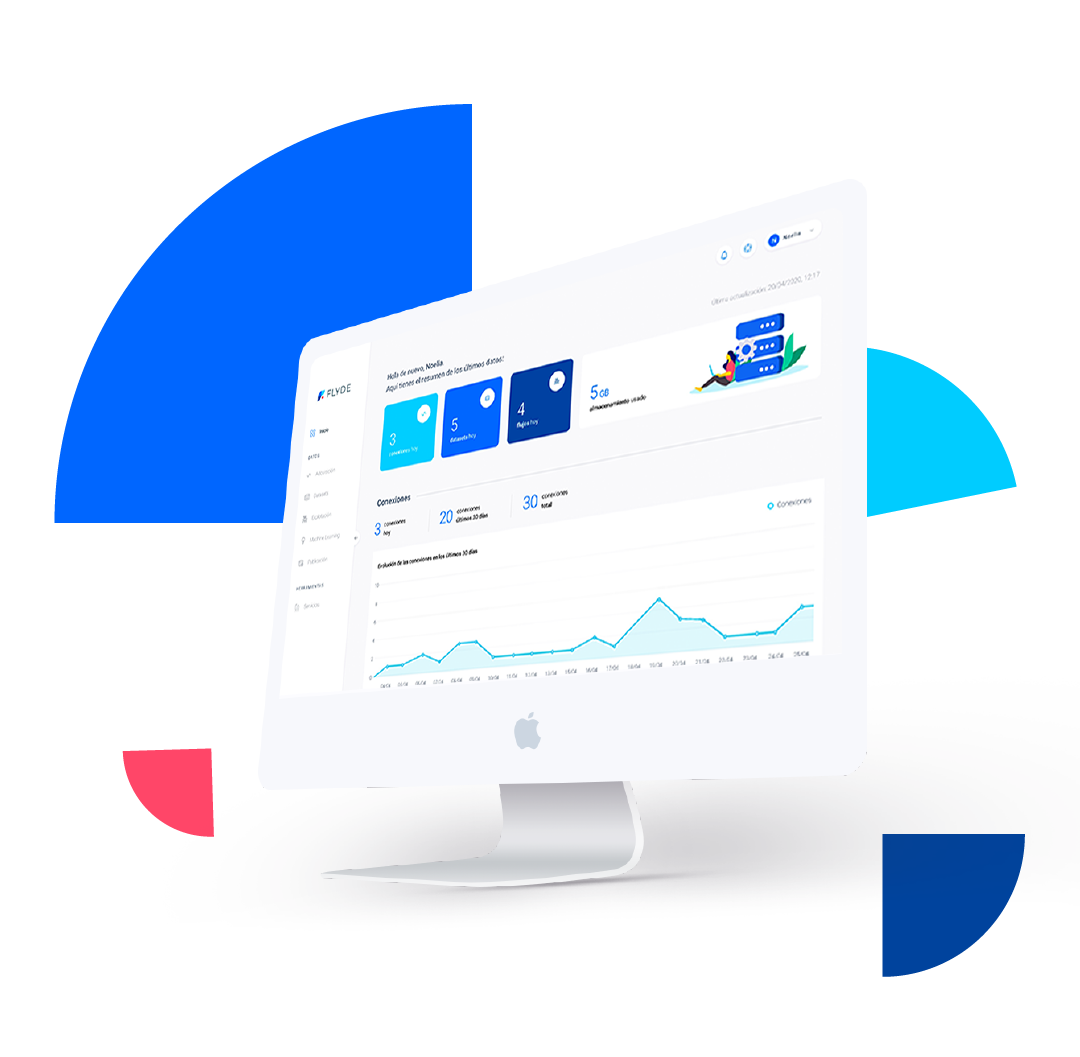
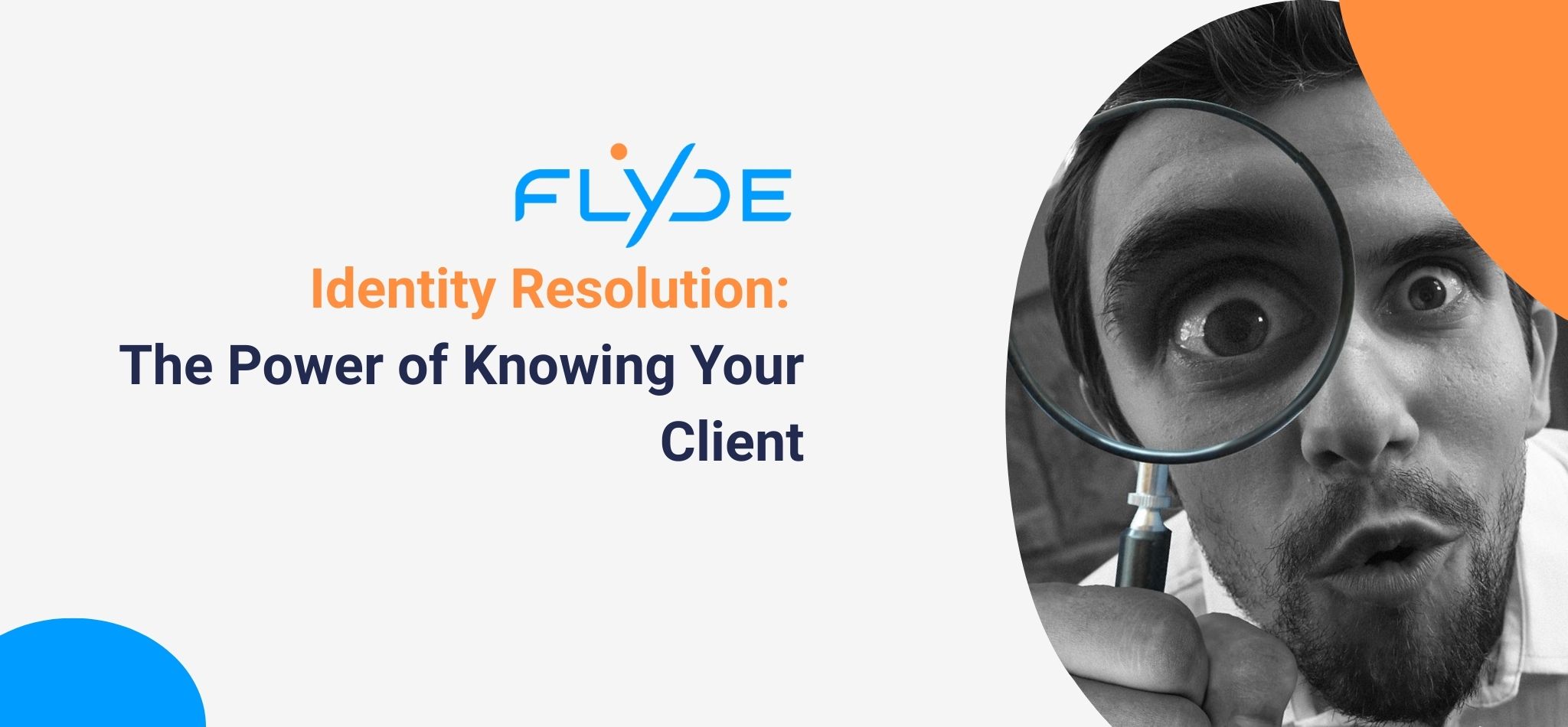
In your CRM, you have a customer named Juan Pérez.
In your email marketing platform, there’s a user with the email jperez@gmail.com.
In your loyalty program, another has the email, juanperez@hotmail.com.
And on your website, there’s a particular anonymous visitor who browses every week.
Your business sees them as four different people, but in reality, they’re the same customer.
When data isn’t unified into a single profile, it’s impossible to truly understand that customer’s journey. The same issue happens with hundreds or thousands of other clients: the fragmented, duplicated data and anonymous records actually correspond to individual people. Without unification, the trends that drive your business get lost in the data.
WHAT IS IDENTITY RESOLUTION?
Identity resolution is the process of unifying the fragmented pieces of information into a single customer profile. Two main approaches are used to achieve this:
- Deterministic Matching: Connects records using unique identifiers like an email address, phone number, or customer ID.
- Probabilistic Matching: Connects records based on behavioral patterns and similarities, such as the same device, IP address, or browsing history.
Combining both methods allows you to create a complete and reliable view: the 360-degree customer profile.
WHY IS IT KEY FOR MARKETING AND DATA?
Identity resolution isn’t just a technical exercise. It directly impacts your business results.
- Consistency: It prevents you from sending duplicate or contradictory messages.
- Personalization: It allows you to deliver relevant experiences across every channel.
- Accurate Measurement: One customer equals a single profile and a single set of KPIs.
- Compliance: It simplifies consent management and privacy requests by centralizing data at a single control point.
IMPLEMENTATION OF IDENTITY RESOLUTION WITH A CDP
A Customer Data Platform (CDP) simplifies and automates identity resolution. At FLYDE, we do it this way:
- Connecting to multiple data sources to centralize customer data and eliminate silos. This includes sources like CRM, e-commerce, campaigns, loyalty programs, web browsing, and more.
- Data normalization to clean, standardize, and remove inconsistencies.
- Applying smart matching rules that combine both deterministic and probabilistic approaches.
- Creating unique customer profiles that are enriched with every new interaction.
- Real-time updates so your teams always work with the most current information.
A PRACTICAL EXAMPLE
A fashion retailer analyzing its databases discovers it has the same customer registered four times: with different emails, as an anonymous website user, and as a member of their loyalty program. These records need to be consolidated into a single unified profile to personalize loyalty campaigns, reduce duplicate mailings, and improve the customer experience.
The identity resolution process is implemented in several phases:
- Integration: First, the CRM, e-commerce, loyalty, email marketing, and web browsing are connected in a single central repository.
- Cleaning and Normalization: Formats are unified (e.g., phone numbers with and without country codes), and incomplete records are removed.
- Smart Matching: Deterministic rules (same email, same phone number) and probabilistic rules (same device and purchasing behavior) are applied to consolidate duplicates.
- Unified Profile: Each customer now has a 360-degree profile, updated in real time with every new interaction.
You can expect to see results such as:
- A reduction in duplicate email mailings.
- An increase in conversion rates for retargeting campaigns.
- An improvement in the customer experience, as they no longer receive repeated or contradictory messages across different channels.
HOW FLYDE FITS IN: THE ROLE OF A CUSTOMER DATA PLATFORM (CDP)
With FLYDE, identity resolution is no longer a technical challenge. Our platform unifies each customer’s scattered data into a single, reliable profile that can be activated across all your channels. It enables you to run smarter campaigns, perform more precise segmentation, and create personalized experiences that generate real value for your customers.
Want to see how it works in practice? Contact us to request a demo, and we’ll show you how FLYDE can open up new possibilities for you.
Start taking control of your data today.
Schedule a meeting with one of our experts and discover how FLYDE can help your company achieve its goals.

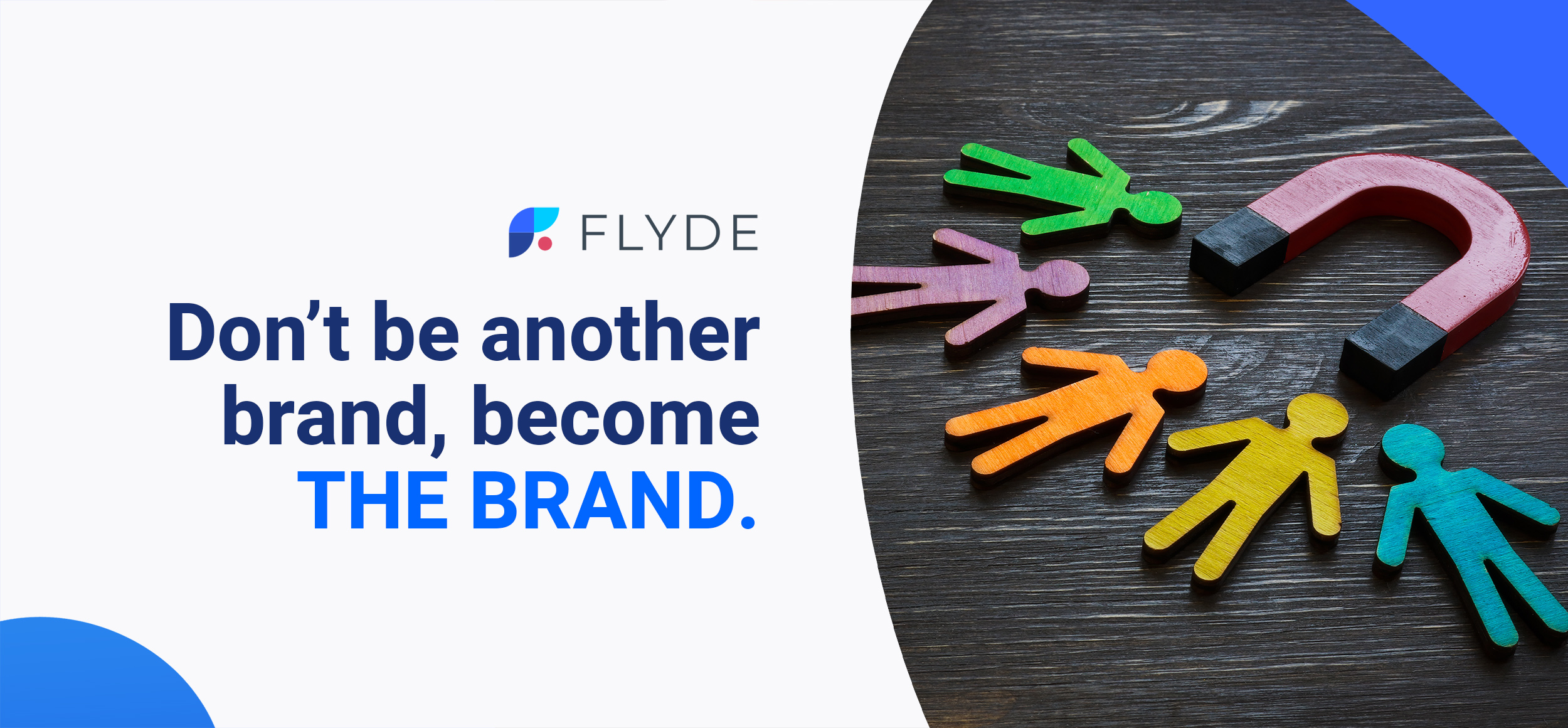
As the world becomes increasingly competitive, companies must focus on customer satisfaction and loyalty to succeed. While customer acquisition is essential for growth, customer retention is even more critical. Retaining existing customers is essential for the long-term health of any business, as loyal customers tend to spend more, refer more, and cost less to retain.
In this blog, we will discuss marketing retention vs. acquisition and why current trends show that retention is much more important. We will also explore how a Smart Customer Data Platform (CDP) can help companies boost retention.
The importance of Customer Retention
The cost of acquiring new customers is significantly higher than retaining existing ones. According to a study by Harvard Business Review, increasing customer retention by just 5% can increase profits by 25-95%. This is because loyal customers tend to spend more, refer more, and cost less to retain.
Additionally, loyal customers provide valuable feedback and can help businesses improve their products and services. Therefore, it is essential for companies to focus on retaining existing customers.
Customer Retention vs. Customer Acquisition
While customer acquisition is necessary for growth, it should not come at the expense of customer retention. Many companies make the mistake of focusing too much on acquiring new customers and neglecting existing ones. However, research shows that companies that focus on customer retention tend to be more successful in the long run. Customer retention should be a top priority for any company that wants to grow and thrive.
The benefits of focusing on retention over acquisition
Focusing on customer retention over acquisition can provide a number of benefits to companies, including increased customer lifetime value (CLV), improved customer loyalty, and reduced marketing costs. By retaining existing customers, companies can increase CLV by encouraging repeat purchases and reducing churn. Additionally, loyal customers tend to refer others to the company, which can help reduce marketing costs associated with customer acquisition. By prioritizing retention, companies can create a positive cycle of growth that leads to long-term success.
How a Smart CDP can help boost retention
A Smart CDP can provide a comprehensive view of a company’s customers, allowing them to personalize marketing messages, improve customer service, and identify opportunities to upsell and cross-sell.
For example, let’s say a retailer collects data on a customer’s purchase history, browsing behavior, and preferences. With a Smart CDP, the retailer can use this data to send targeted marketing messages based on the customer’s interests and behavior. They can also use the data to recommend complementary products, provide personalized promotions, and improve customer service by addressing the customer’s specific needs and concerns. By using a Smart CDP, the retailer can create a more personalized and engaging experience for their customers, which can lead to increased loyalty and retention.
WHY FLYDE?
Do you want your company to move on to the next level? A CDP is the key tool that will allow you to maximize the potential of your data and grow your business. Having control over all your data is now very simple.
Moreover, if you do not have IT or Data Scientist teams, this tool will allow you to outsource this function. And if you have them but want to reduce their workload and give more autonomy to your marketing and business teams when it comes to working with data, implementing an easy-to-use CDP would be the best option for your company. It will allow any single member of your company to use it, as this softwares are prepared for them.
Start taking control of your data today.
Schedule a meeting with one of our experts and discover how FLYDE can help your company achieve its goals.

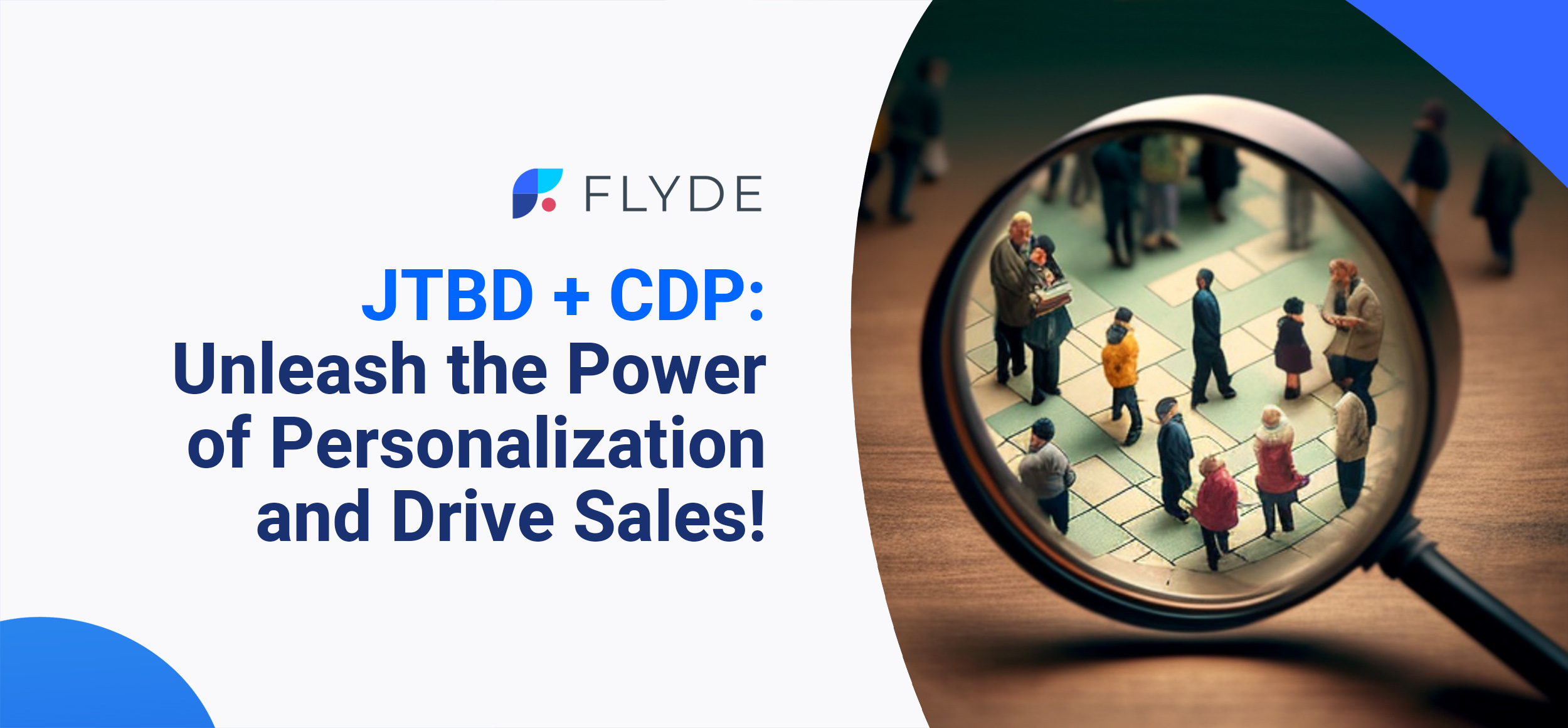
Understanding your customers’ needs and desires is essential to building a successful business. However, it’s not enough to simply ask your customers what they want. To truly understand their needs, you must identify the jobs or tasks they are trying to accomplish. This is where the Jobs-To-Be-Done (JTBD) framework comes in.
In this blog, we’ll see how to improve your JTBD strategy with a Customer Data Platform (CDP). By using a CDP, you can gain a more comprehensive understanding of your customers and their behaviors, which can help you improve your JTBD strategy.
Why Understanding JTBD Is Crucial for Your Business
Jobs-To-Be-Done (JTBD) is a framework that helps businesses understand the needs and desires of their customers by focusing on the jobs or tasks that customers are trying to accomplish. By understanding your customers’ JTBD, you can design products and services that meet their needs and differentiate yourself from competitors.
How to Improve Your JTBD Strategy with a CDP
A Customer Data Platform (CDP) is a data management tool that allows you to collect, unify, and analyze customer data from multiple sources. By using a CDP, you can gain a more comprehensive understanding of your customers and their behaviors, which can help you improve your JTBD strategy.
Here are four ways to improve your JTBD strategy with a CDP:
-
-
-
- Collect and unify customer data from multiple sources: A CDP allows you to collect and unify customer data from multiple sources, giving you a more comprehensive view of your customers.
- Analyze customer data using the JTBD framework: Using the JTBD framework, you can analyze customer data to identify the specific jobs your customers are trying to accomplish.
- Personalize marketing and product recommendations: By using the CDP to personalize your marketing and product recommendations, you can better meet your customers’ JTBD and increase engagement and sales.
- Optimize inventory to better meet customer needs: By understanding your customers’ JTBD, you can optimize your inventory to better meet their needs, reducing waste and improving your bottom line.
-
-
Case Study – How could a retailer improve their JTBD strategy with a CDP?
A retailer uses a CDP to collect and unify customer data from multiple sources, enabling them to gain a comprehensive view of their customers and their behaviors. Using the JTBD framework, the retailer analyzes the data to identify the specific jobs their customers are trying to accomplish when they shop for clothes, such as looking for stylish and fashionable clothes, prioritizing comfort and functionality, or finding clothes for specific occasions.
The retailer uses the CDP to personalize their marketing and product recommendations to better meet their customers’ JTBD. By creating targeted email campaigns and personalized product recommendations, the retailer increases customer engagement and sales, leading to higher customer loyalty and repeat purchases.
Additionally, the retailer is able to optimize their inventory to better meet their customers’ needs, reducing waste and improving their bottom line. In this way, using JTBD and a CDP can help fashion retailers to better understand their customers and improve their business results in a highly competitive industry.
Conclusion and Next Steps
In conclusion, understanding your customers’ JTBD is essential to designing products and services that meet their needs. By using a CDP to collect, unify, and analyze customer data, you can gain a deeper understanding of your customers and improve your JTBD strategy. To get started, consider implementing a CDP and using the four strategies outlined in section two to improve your JTBD strategy. With a more customer-centric approach, you can differentiate yourself from competitors and build stronger, more loyal customer relationships.
WHY FLYDE?
Do you want your company to move on to the next level? A CDP is the key tool that will allow you to maximize the potential of your data and grow your business. Working like the big multinationals in the market, which already have this type of software, and having control over all your data is now very simple.
Moreover, if you do not have IT or Data Scientist teams, this tool will allow you to outsource this function. And if you have them but want to reduce their workload and give more autonomy to your marketing and business teams when it comes to working with data, implementing an easy-to-use CDP would be the best option for your company. It will allow any single member of your company to use it, as this softwares are prepared for them.
Start taking control of your data today.
Schedule a meeting with one of our experts and discover how FLYDE can help your company achieve its goals.


If you’re looking for a way to better understand your customers and their purchasing behavior, RFM analysis is an excellent place to start. This powerful tool allows you to segment your customer base based on recency, frequency, and monetary value, giving you valuable insights into the behavior of different groups of customers.
What is RFM Analysis?
RFM analysis is a data-driven approach to customer segmentation. By analyzing customer data in terms of Recency (how recently they made a purchase), Frequency (how often they make purchases), and Monetary value (how much they spend), you can gain insights into the behavior of different groups of customers.
How Does RFM Analysis Work?
To perform RFM analysis, you need to collect data on your customers’ purchase history, including the date of their last purchase, the number of purchases they’ve made, and the total amount they’ve spent. You can then rank customers on each of these metrics and assign them a score between 1 and 5 for each metric.
For example, a customer who made a purchase in the last week would be assigned a high score for recency, while a customer who hasn’t made a purchase in several months would be assigned a low score. Similarly, a customer who has made many purchases and spent a lot of money would be assigned a high score for frequency and monetary value, while a customer who has made only a few purchases and spent little money would be assigned a low score.
Once you’ve assigned scores to each customer, you can use these scores to segment your customers into different groups based on their behavior. For example, you might have a group of high-value customers who make frequent purchases, a group of low-value customers who make infrequent purchases, and a group of recent customers who haven’t yet made a lot of purchases.
How Can You Use RFM Analysis to Improve Your Business?
Once you’ve segmented your customers using RFM analysis, you can use this information to tailor your marketing and sales strategies to each group.
For example, you might create different types of content or promotions to target each group.
If you have a group of high-value customers who make frequent purchases, you might focus on providing them with personalized offers and promotions. You might also consider creating a loyalty program to reward them for their continued business.
If you have a group of recent customers who haven’t yet made a lot of purchases, you might focus on providing them with educational content that helps them understand the value of your products or services. You might also consider offering them a special promotion to incentivize them to make a purchase.
By using RFM analysis to segment your customers and tailor your marketing and sales strategies to each group, you can improve your overall customer retention and satisfaction, which can ultimately lead to increased revenue and growth for your business.
Which martech tool would be needed to carry out RFM analysis properly?
By using a Customer Data Platform (CDP) you could effectively perform RFM analysis. A CDP is a software tool that allows you to collect, analyze, and segment customer data from multiple sources, including your website, social media channels, customer support interactions, or any other that you might have.
To perform RFM analysis using a CDP, you first need to integrate your customer data into the platform by connecting your website analytics tool, email marketing platform, CRM system, and any other database with customer information that you have available to the CDP. Once integrated, the CDP will automatically assign scores to each customer based on their behavior in terms of Recency, Frequency, and Monetary value.
Using the insights gained from RFM analysis, you can segment your customers into different groups and tailor your marketing and sales strategies to each group. By using a CDP to perform RFM analysis, you can gain a more comprehensive understanding of your customers’ behavior, make informed business decisions, and improve your overall performance.
WHY FLYDE?
Do you want your company to move on to the next level? A CDP is the key tool that will allow you to maximize the potential of your data and grow your business. Working like the big multinationals in the market, which already have this type of software, and having control over all your data is now very simple.
Moreover, if you do not have IT or Data Scientist teams, this tool will allow you to outsource this function. And if you have them but want to reduce their workload and give more autonomy to your marketing and business teams when it comes to working with data, implementing an easy-to-use CDP would be the best option for your company. It will allow any single member of your company to use it, as this softwares are prepared for them.
Start taking control of your data today.
Schedule a meeting with one of our experts and discover how FLYDE can help your company achieve its goals.

